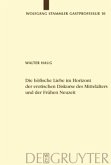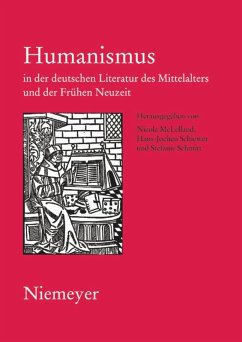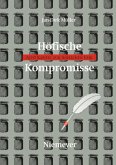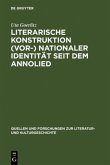When words and images form connections, the potential of their contents and their plausibility can be strengthened through the incorporation of verbal and pictorial traditions. The resulting combinations can be elaborated through the use of additional iconological elements. The means in which the respective situations and intentions give rise to innovations is examined here, particularly in illustratedbroadsheets and emblematics, as it is here that the assertiveness of text-image connections can be easily observed.
Im Übergang vom Mittelalter zur Neuzeit wird hier erprobt, wie einzelne Bestandteile in Wort-Bild-Kombinationen inhaltliche Potentiale unterschiedlicher antiker und mittelalterlicher Traditionen in neue Kontexte vermitteln und mit welchen Auswirkungen sie sich mit anderen Bildlichkeitselementen zu größeren bildlichen oder verbalen Konstellationen erweitern. Bei derartigen Prozessen können sich alte Bedeutungen wandeln und neue Aussagemöglichkeiten gewonnen werden, etwa in Bildkomplexen des Fortunarades, des christlichen Ritters und des Schiffs des Staats oder der Kirche. Die Wirkung der Veränderungen ist vom Stand des Wissens und der Erwartungen auf Seiten des Publikums abhängig und damit situationsbedingt. Die Plausibilität der jeweiligen Neuerung lässt sich besonders dort gut beobachten, wo die Steuerung der Rezeption wenig oder gar nicht über einen weitläufigen Werkkontext oder mit Hilfe der Autorität eines bekannten Verfassers erfolgt. Daher bilden illustrierten Flugblätter und Embleme die Basis dieser Untersuchung.
Im Übergang vom Mittelalter zur Neuzeit wird hier erprobt, wie einzelne Bestandteile in Wort-Bild-Kombinationen inhaltliche Potentiale unterschiedlicher antiker und mittelalterlicher Traditionen in neue Kontexte vermitteln und mit welchen Auswirkungen sie sich mit anderen Bildlichkeitselementen zu größeren bildlichen oder verbalen Konstellationen erweitern. Bei derartigen Prozessen können sich alte Bedeutungen wandeln und neue Aussagemöglichkeiten gewonnen werden, etwa in Bildkomplexen des Fortunarades, des christlichen Ritters und des Schiffs des Staats oder der Kirche. Die Wirkung der Veränderungen ist vom Stand des Wissens und der Erwartungen auf Seiten des Publikums abhängig und damit situationsbedingt. Die Plausibilität der jeweiligen Neuerung lässt sich besonders dort gut beobachten, wo die Steuerung der Rezeption wenig oder gar nicht über einen weitläufigen Werkkontext oder mit Hilfe der Autorität eines bekannten Verfassers erfolgt. Daher bilden illustrierten Flugblätter und Embleme die Basis dieser Untersuchung.








